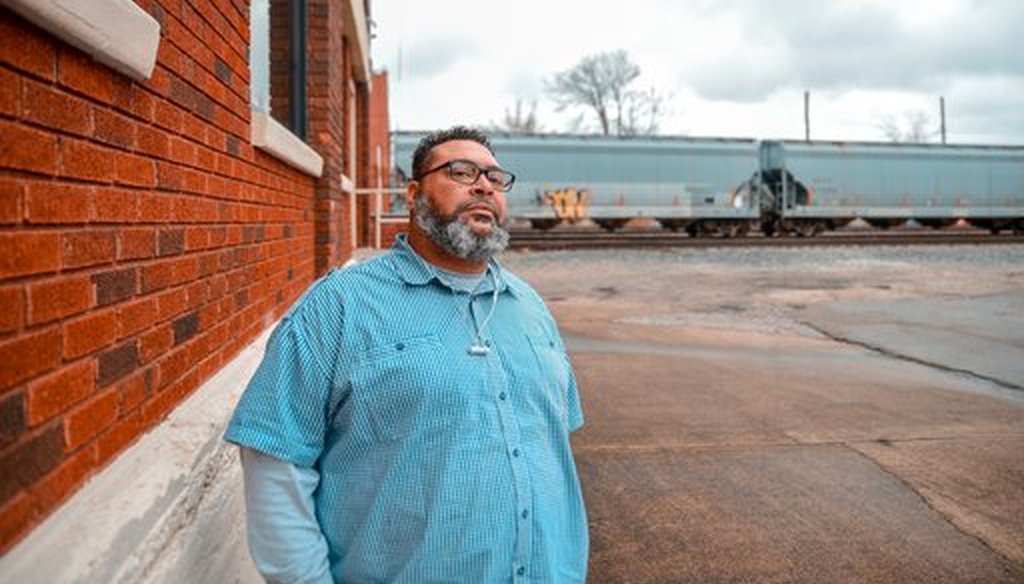Stand up for the facts!
Our only agenda is to publish the truth so you can be an informed participant in democracy.
We need your help.
I would like to contribute

Thommy Hill stands outside the Cabell County/Huntington Health Department, where he works in the harm reduction program, on Dec. 5, 2018. (AP)
During his State of the State address on Jan. 9, West Virginia Gov. Jim Justice made the opioid epidemic a focus of his speech.
At one point, Justice said, "Now, in Cabell County, we just had information that we reduced our overdoses by 40 percent."
The governor’s office did not respond to an inquiry, and when we reached out to local and state offices, we were unable to get a response on one key point. For that reason, we aren’t rating this statement on the Truth-O-Meter, but we decided to share what we did find out.
Only data on nonfatal overdoses was available for 2018; we were unable to confirm the statistics on fatal overdoses. Justice didn’t specify the type of overdose in his speech.
Data on overdoses is reported to the West Virginia Office of Emergency Medical Services.
Connie Priddy, a Cabell County EMS compliance officer who is tasked with reporting official data to the state, told the Huntington-based Herald-Dispatch newspaper in January that Cabell County had 742 fewer non-fatal drug overdoses in 2018 compared with the record-setting 2017. That was a decrease of 40.5 percent.
Cabell County had fewer overdoses in each month of 2018 compared to the same month in 2017, Priddy told the newspaper. In December 2018, for instance, there were 80 overdoses, compared to 118 overdoses in December 2017. (We reached out to Priddy’s office but did not hear back.)
Cabell County, in the western part of the state, is one of West Virginia’s most populous counties and includes the city of Huntington. As we’ve previously noted, West Virginia has the highest overdose rate per capita of any state in our nation, and Cabell County has been particularly hard hit.
So why the decline in fatal overdoses? A trio of federal grants, we learned, likely helped.
In September 2017, the city of Huntington announced that Cabell County had received three federal grants totaling $2 million.
Two of the federal grants, from the Justice Department and the Department of Health and Human Services, were designed to support the county’s Quick Response Team, a group comprised of "medical care providers, law enforcement, recovery and treatment providers, and university researchers to respond to individuals who have overdosed within 72 hours."
The team is responsible for designing a plan of action after an overdose, as well as "overdose education, screening, risk-reduction training" and training in the use of naloxone, which is used to treat overdoses.
The third grant, also from the Justice Department, was designed to aid the Turn Around program, a pilot program at a local jail that identifies and assesses individuals convicted of misdemeanors who have health and substance-use issues.
Our Sources
National Institute on Drug Abuse, West Virginia Opioid Summary, accessed Jan. 26, 2019.
Annual Surveillance Report of Drug-Related Risks and Outcomes, Drug Use In West Virginia, accessed Jan. 26, 2019.
Herald-Dispatch, "Cabell County sees 40 percent drop in overdoses," accessed Jan. 29, 2019.
City of Huntington, City of Huntington Awarded Federal Grants to Combat Opioid Epidemic, accessed Jan. 29, 2019.

 PolitiFact Rating:
PolitiFact Rating: 





























